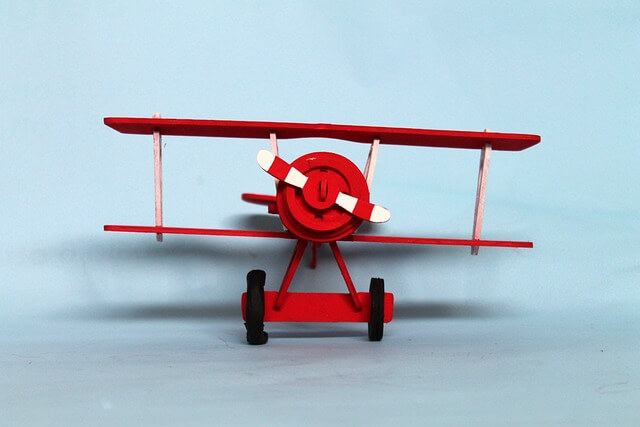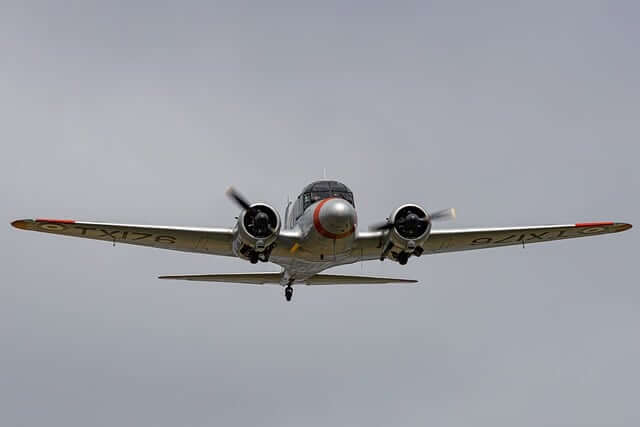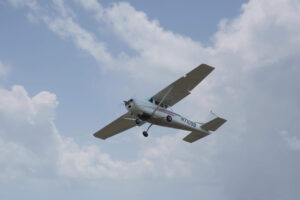Introduction
Earning a Multi-Engine Rating can be a game-changer for pilots. This certification not only broadens your flying skills but also opens up exciting career opportunities.
In this comprehensive guide, we’ll walk you through everything you need to know about obtaining your FAA Multi-Engine Rating, from prerequisites and training to costs and post-certification opportunities.
Understanding the Multi-Engine Rating
A Multi-Engine Rating allows pilots to operate aircraft with more than one engine.
This qualification is highly sought after due to its numerous benefits, including enhanced career prospects, greater flying versatility, and increased safety during flights.
Whether you’re eyeing a career as a commercial pilot or simply looking to expand your piloting capabilities, a Multi-Engine Rating is a valuable asset.
Prerequisites and Requirements
Before you embark on the journey to earn your Multi-Engine Rating, you need to meet certain prerequisites:
Existing Certifications
To be eligible for a Multi-Engine Rating, you must hold at least a Private Pilot License (PPL).
Most pilots pursuing this rating typically have a Commercial Pilot License (CPL) or are working towards one.
Holding an Instrument Rating (IR) is highly beneficial, although not strictly required, as multi-engine operations often occur in complex airspace and under various weather conditions.
Flight experience
The FAA mandates specific flight experience requirements for obtaining a Multi-Engine Rating. These requirements ensure that pilots have sufficient experience and proficiency in various flight operations. Key requirements include:
- Total Flight Hours: Typically, you should have at least 250 total flight hours, which is a common benchmark for many advanced ratings.
- Pilot in Command (PIC) Hours: You need a minimum of 100 hours as the pilot in command, which demonstrates your ability to handle an aircraft independently.
- Cross-Country Flight: A minimum of 50 hours of cross-country flight time as PIC, showcasing your capability to navigate over longer distances.
- Night Flying: At least 10 hours of night flying, including at least 5 hours on night cross-country flights, enhancing your proficiency in low-visibility conditions.
- Instrument Experience: While not mandatory, having some instrument flight experience is advantageous. This includes both actual and simulated instrument time, preparing you for all-weather operations in multi-engine aircraft.
Medical Certificate
To ensure you’re physically fit to operate multi-engine aircraft, you must possess a current FAA medical certificate appropriate for your level of certification.
For private pilots, a third-class medical certificate is sufficient, whereas commercial pilots will need a second-class medical certificate. Here are the steps to obtain and maintain your medical certificate:
- Initial Examination: Schedule an appointment with an FAA-authorized Aviation Medical Examiner (AME) for a comprehensive medical evaluation.
- Regular Check-ups: Depending on your age and certificate class, regular check-ups are required to maintain your medical certificate (every 5 years for third-class if under 40, every 2 years for second-class, etc.).
- Health Maintenance: Adhere to a healthy lifestyle, managing any medical conditions that could affect your flying ability.

Choosing the Right Flight School
Selecting the right flight school is a critical step in your journey to earning a Multi-Engine Rating. A good flight school will provide the necessary training, resources, and support to help you succeed.
Here’s a detailed look at what to consider:
Research:
Start by researching various flight schools. Look for institutions with strong reputations, high success rates for students, and positive reviews from past graduates.
Resources like aviation forums, pilot communities, and FAA-approved school listings can be invaluable in your research.
Accreditation:
Ensure the flight school is FAA-approved. This accreditation guarantees that the school adheres to the highest standards of training and safety.
FAA-approved schools follow a structured curriculum and use approved training materials and methods, which are essential for a comprehensive learning experience.
Instructors:
The quality of instructors can make or break your training experience. Look for flight schools with highly experienced and well-qualified instructors.
Ideally, your instructors should have significant multi-engine flight time and a proven track record of successfully training students for the Multi-Engine Rating.
Aircraft Fleet:
Check the flight school’s aircraft fleet. Ensure they have a variety of well-maintained multi-engine aircraft available for training.
Training on different types of multi-engine planes can provide valuable experience and enhance your skills.
Training Program:
Evaluate the structure and content of the school’s training program. A good program should include both ground school and flight training components.
Ground school should cover theoretical knowledge such as multi-engine aerodynamics, systems, and emergency procedures, while flight training should provide hands-on experience with maneuvers like engine-out procedures and Vmc demonstrations.
Cost and Financing:
Compare the costs of various flight schools, including tuition, aircraft rental rates, instructor fees, and any additional costs for materials or exams.
Some schools offer financing options, scholarships, or payment plans, which can make training more affordable. Ensure you understand the full cost and explore all available financial aid options.
Location and Schedule:
Consider the location of the flight school and how it fits into your schedule. Proximity to your home can reduce travel time and costs.
Additionally, some schools offer flexible training schedules, including part-time, full-time, weekend, or evening classes, which can be helpful if you have other commitments.
Visit the School:
If possible, visit the flight school in person. This gives you a chance to see the facilities, meet the instructors, and get a feel for the school’s environment.
During your visit, ask about the school’s safety record, student-to-instructor ratio, and success rate for students obtaining their Multi-Engine Rating.
Student Support:
Look for schools that offer strong student support services. This includes academic advising, career counseling, and assistance with job placement after graduation.
Schools with a solid support system can provide valuable guidance and help you navigate any challenges during your training.
Choosing the right flight school is an essential step in your journey to earning a Multi-Engine Rating. By carefully considering these factors, you can select a school that meets your needs and sets you up for success.

Ground School Training
Ground school is where you’ll learn the theoretical aspects of multi-engine flying.
It’s a crucial part of your training, providing the knowledge foundation you’ll need to safely operate multi-engine aircraft. Here’s what to expect and how to make the most of it:
Curriculum:
Ground school covers a range of topics, including:
Multi-Engine Aerodynamics: Learn how multi-engine aircraft differ from single-engine planes, focusing on the principles of flight that apply specifically to aircraft with more than one engine.
- Systems: Study the various systems in multi-engine aircraft, such as fuel, electrical, and hydraulic systems. Understanding these systems is vital for handling normal and emergency operations.
- Performance: Learn about the performance characteristics of multi-engine planes, including how to calculate weight and balance, performance during different phases of flight, and the impact of various configurations on flight dynamics.
- Emergency Procedures: Gain in-depth knowledge of emergency procedures specific to multi-engine operations, such as engine failures and asymmetric thrust situations.
Study Tips:
Effective study habits are crucial for success in ground school. Here are some tips to help you excel:
- Create a Study Schedule: Allocate regular study time and stick to a consistent schedule to ensure you cover all the necessary material.
- Use Multiple Resources: Supplement your textbooks with online courses, videos, and flight simulation software to reinforce your learning.
- Join Study Groups: Collaborate with fellow students to discuss challenging topics and share insights. Group study can also provide moral support and motivation.
- Practice Tests: Take practice exams to familiarize yourself with the types of questions you’ll encounter on the written test and to identify areas where you need further study.
Exams:
The ground school training culminates in written exams that assess your theoretical knowledge. Here’s how to prepare:
- Understand the Format: Familiarize yourself with the format of the written exams, including the types of questions and topics covered.
- Review Course Material: Regularly review your notes, textbooks, and any supplementary materials provided by your instructors.
- Take Practice Exams: Use practice tests to gauge your readiness and identify areas for improvement.
- Seek Help: If you’re struggling with certain topics, don’t hesitate to ask your instructors for clarification or additional resources.

Flight Training
Flight training is the practical component of earning your Multi-Engine Rating, where you’ll apply the knowledge gained in ground school. Here’s a detailed look at what to expect during this phase:
Flight Hours
You’ll need to complete a minimum number of flight hours in a multi-engine aircraft.
While the FAA typically requires around 15-20 hours of multi-engine flight time, the exact number can vary based on your proficiency and the flight school’s curriculum.
Maneuvers
Flight training focuses on mastering various maneuvers specific to multi-engine aircraft. Key skills you’ll learn include:
- Engine-Out Procedures: Practice handling engine failures during different phases of flight, including takeoff, climb, cruise, and landing. This is crucial for managing asymmetric thrust and maintaining control of the aircraft.
- Vmc Demonstration: Understand and demonstrate the minimum control speed with one engine inoperative (Vmc). This involves practicing stalls and recoveries in asymmetric flight conditions.
- Single-Engine Approaches and Landings: Learn how to perform approaches and landings with one engine inoperative, ensuring you can safely land the aircraft in an emergency.
- Asymmetric Flight: Practice flying with one engine inoperative, focusing on maintaining control and performing coordinated turns and maneuvers.
Simulators
Flight simulators play a vital role in multi-engine training. Here’s why they’re beneficial:
- Safe Environment: Simulators provide a safe environment to practice emergency procedures and complex maneuvers without the risks associated with actual flight.
- Cost-Effective: Using simulators can be more cost-effective than actual flight hours, allowing you to practice and perfect your skills before applying them in a real aircraft.
- Repetition and Consistency: Simulators allow for repetitive practice of specific scenarios, helping you build muscle memory and confidence.
Flight training is an exciting and challenging phase of earning your Multi-Engine Rating.
By focusing on mastering key maneuvers and making the most of simulator practice, you’ll be well-prepared for the practical test and confident in your abilities to safely operate multi-engine aircraft.
The Checkride
The checkride is the final test of your skills and knowledge, culminating in the award of your Multi-Engine Rating if you pass.
It involves both an oral exam and a practical flight test, assessed by an FAA-designated examiner. Here’s how to prepare and what to expect:
Preparation:
- Familiarize Yourself with the Practical Test Standards (PTS): The PTS outlines the specific maneuvers and procedures you’ll be tested on. Review it thoroughly to understand the criteria for each task.
- Practice, Practice, Practice: Ensure you’re comfortable with all required maneuvers, including engine-out procedures, Vmc demonstrations, and single-engine landings. Consistent practice builds confidence and proficiency.
- Simulate the Checkride: Conduct mock checkrides with your instructor to simulate the actual test environment. This helps you get used to the pressure and identify any weak areas that need improvement.
- Review Oral Exam Topics: The oral portion covers various topics, including aircraft systems, emergency procedures, and multi-engine aerodynamics. Be prepared to discuss these in detail.
Common Mistakes:
- Improper Engine-Out Procedures: Failing to correctly execute engine-out procedures is a common mistake. Practice these until they become second nature.
- Checklist Deviations: Always follow checklists meticulously. Skipping steps or deviating from standard procedures can result in failure.
- Poor Communication: Clear and effective communication with your examiner is crucial. Ensure you can articulate your actions and decisions during the flight.
Success Tips
- Improper Engine-Out Procedures: Failing to correctly execute engine-out procedures is a common mistake. Practice these until they become second nature.
- Checklist Deviations: Always follow checklists meticulously. Skipping steps or deviating from standard procedures can result in failure.
- Poor Communication: Clear and effective communication with your examiner is crucial. Ensure you can articulate your actions and decisions during the flight.

Costs and Financing
Earning a Multi-Engine Rating can be a significant investment. Here’s a breakdown of typical costs and financing options to help you manage expenses effectively:
Training Costs:
Expect to spend between $5,000 and $10,000 on training, depending on the flight school, aircraft rental rates, and the number of hours required.
This includes costs for flight instruction, aircraft rental, ground school, and any additional training materials.
Checkride Fees:
Budget for examiner fees, which can range from $500 to $1,000.
This fee covers the cost of the examiner’s time for both the oral exam and the practical flight test.
Study Materials:
Allocate funds for study materials, such as textbooks, online courses, and practice exams.
These resources can cost anywhere from $100 to $500, depending on the extent of your preparation.
Financing Options:
Several financing options are available to help manage the costs of earning your Multi-Engine Rating:
- Scholarships: Explore scholarships offered by aviation organizations, such as the Aircraft Owners and Pilots Association (AOPA) and Women in Aviation International (WAI). These scholarships can provide significant financial assistance.
- Personal Loans: Consider taking out a personal loan to cover training expenses. Many banks and credit unions offer loans specifically designed for flight training.
- Flight School Financing Programs: Some flight schools offer financing programs or partnerships with financial institutions to help students pay for their training. Inquire about these options when researching schools.
- Payment Plans: Many flight schools offer payment plans that allow you to pay for your training in installments rather than a lump sum. This can make managing costs more feasible.
Post-Rating Opportunities
Once you’ve earned your Multi-Engine Rating, a world of opportunities opens up:
- Career Paths: Consider jobs such as regional airline pilot, charter pilot, and corporate aviation.
- Networking: Join aviation communities, attend industry events, and connect with fellow pilots to expand your professional network.
- Continuous Learning: Stay current with regular practice and consider pursuing additional ratings or endorsements to further enhance your skills.
FAQs
What is the minimum age for obtaining a Multi-Engine Rating? You must be at least 17 years old to hold a Private Pilot License, which is a prerequisite for the Multi-Engine Rating.
How long does it typically take to earn a Multi-Engine Rating? The duration varies, but many pilots complete their training in 1-3 months, depending on their schedule and availability.
Can I obtain a Multi-Engine Rating with a Private Pilot License? Yes, you can earn a Multi-Engine Rating with a Private Pilot License. However, you’ll need to meet the specific flight experience requirements.
Wrapping Up
Earning your Multi-Engine Rating is a significant milestone in your aviation journey. It not only enhances your flying skills but also opens up a range of career opportunities. By following the steps outlined in this guide, you’ll be well on your way to achieving this valuable certification. So, gear up, hit the books, and get ready to soar to new heights!




